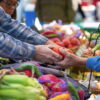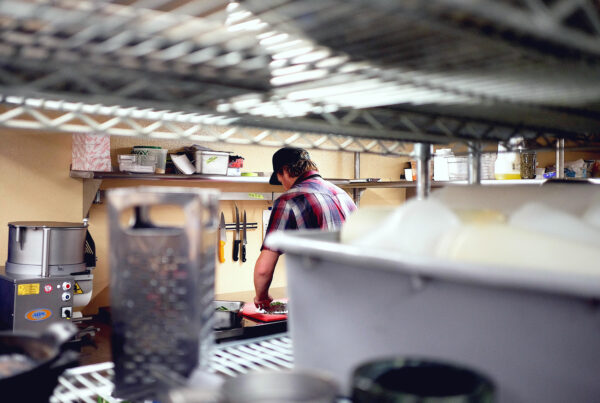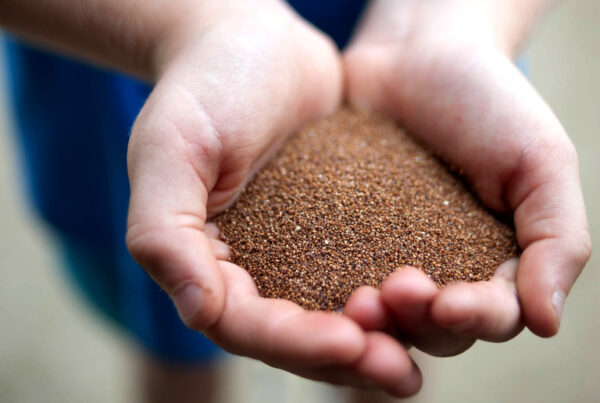It’s an early Saturday morning in downtown Boise. The air is still crisp. A quiet buzz rises from a once-empty parking lot now filled with colorful tents, vibrant produce, and neighbors gathering in jeans and boots. Against a sleepy cityscape, something meaningful is beginning.
The Boise Farmers Market is about to open.
Volunteering there changed the way I see food. As I helped with the Drive-Thru Market, I discovered produce I’d never seen before – bright, fragrant, unfamiliar. No grocery store compares to the freshness, variety, or human connection here. It made me ask: Where does my food come from? Who grows it? How far does it travel?
That curiosity led me to Tim Sommer – Board President of the Boise Farmers Market and founding farmer of Purple Sage Farms. Tim has deep roots in Idaho agriculture and was instrumental in launching the Idaho Organic Certification Program in 1989, after returning from California inspired by the early organic movement.
At the time, Idaho’s agriculture industry was struggling. Tim believed that “the marketplace needed a tool for credibility,” so he and a group of like-minded growers took action. Today, Idaho is home to more than 330 certified organic farms.
Tim’s mission didn’t stop there. Recognizing that small farmers were being excluded from the dominant corporate food system, he helped create the Boise Farmers Market as a place where local growers could sell fresh, diverse, and ethically raised food directly to the community.
“Our farmers are excluded from the dominant corporate food system, so we had to create our own,” he told me. “The Boise Farmers Market makes what our farmers do significant in the marketplace – the marketplace for good food. Food that doesn’t travel hundreds or thousands of miles, is fresh, and is diverse”
Their efforts haven’t gone unnoticed. In 2020, the Boise Farmers Market was ranked the #1 market in the Pacific region and #3 nationwide by the American Farmland Trust.
But it’s not just about farmers. The market also nurtures deep connections with local restaurants. Tim shared that he only sells to local establishments that “are nimble and can follow the flow of seasons”. These restaurants, and the people who eat at them, are part of a circular economy that supports good food and the people who grow it.
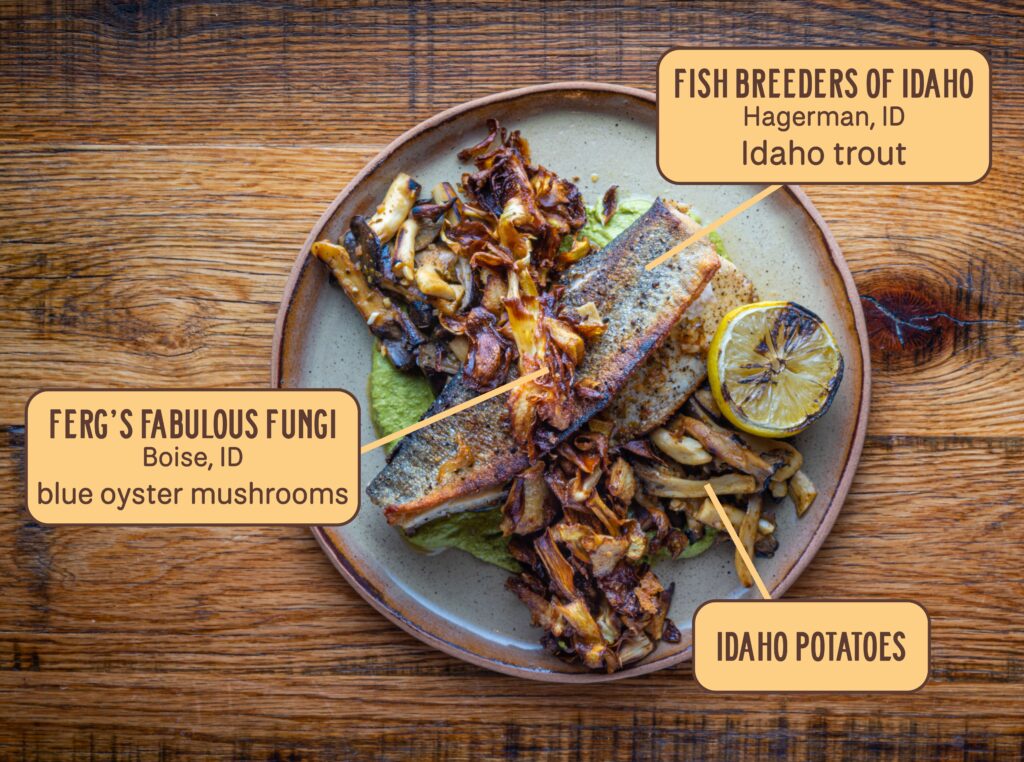
So here’s my challenge to you: eat with intention.
If you’re dining out, be intentional with where you go. Choose local restaurants that source from local purveyors. Pay attention to where these ingredients come from. Many local restaurants, like Diablo & Sons Saloon, proudly list their local purveyors. That Pan Seared Idaho Trout entree or Drunken Black Beans side? It was grown, harvested, and prepared with care. See if you can pin-point the components that make up your dish next time you visit.
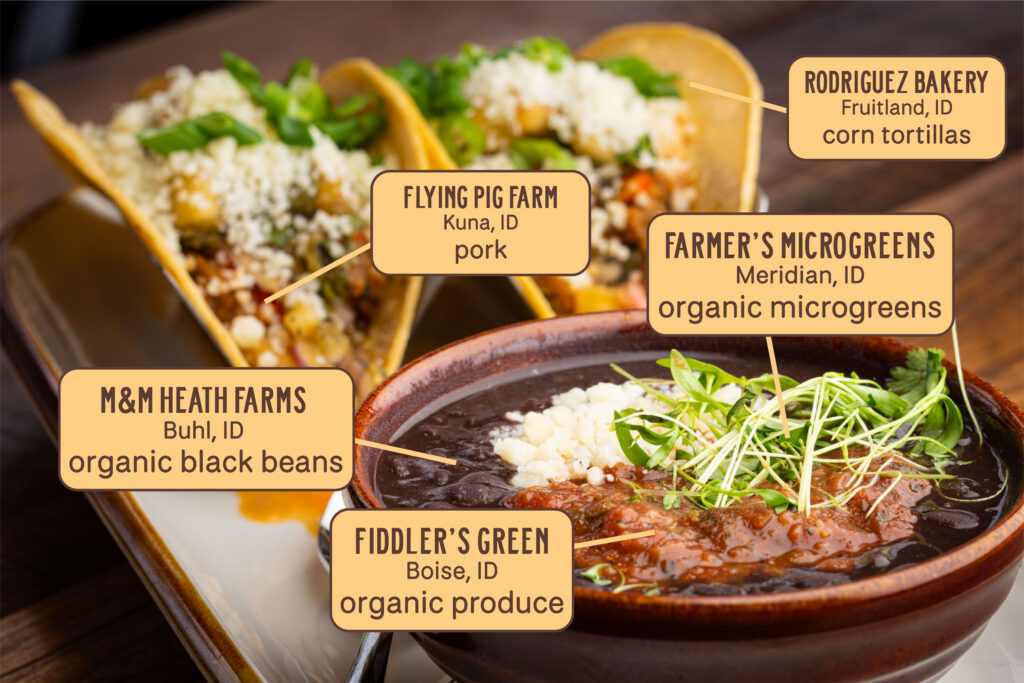
Rethink your grocery shopping. Visit the Boise Farmers Market. Explore. Ask questions. You might discover produce you’ve never seen before! Tim shared, “Often, our producers have produce that isn’t ordinary – but extraordinary. It’s worth the effort to find out what’s available”.
If you’re unsure how to use a product, don’t worry, there are resources abound! The Boise Farmers Market’s monthly “Shop With a Chef” tours include custom recipe cards, a chat with farmers, tote bags, and cooking demonstrations. If you can’t make it to a tour, their website is also filled with free seasonal recipes to guide your kitchen adventures. Almost all ingredients can be found at the Boise Farmers Market!
If you can’t make it to the market on Saturday, their Mobile Market, in partnership with City of Good, travels around the area Monday-Thursday! To find the specific goods available, check out their Instagram pages: @boisefarmersmarket and @citiesofgood
As Tim put it, “The people involved in the market are convicted – like it’s their church. Our ‘congregation’ has strong beliefs, and we don’t shy away from them when times are tough or things go wrong.”
So may you eat with intention.
May your meals honor the land, the seasons, and the people who make good food possible.
May your sustenance be sanctified.
And next time you sit down to eat – take a moment to thank your farmers.
Photo credit to Guy Hand
